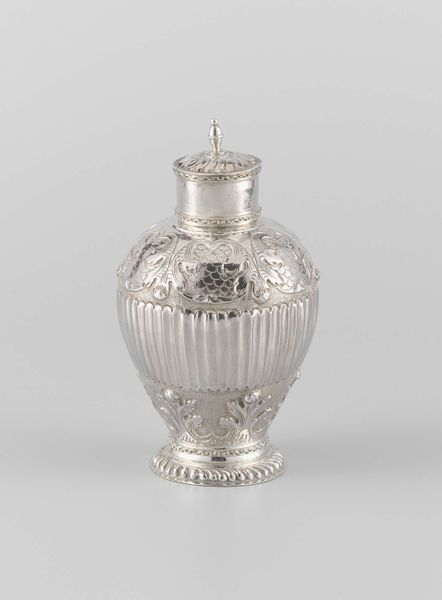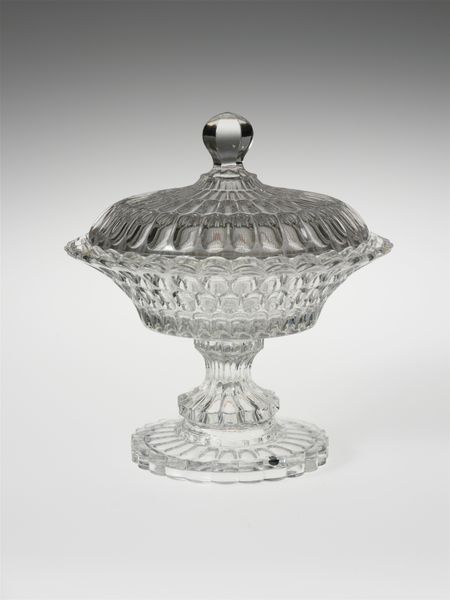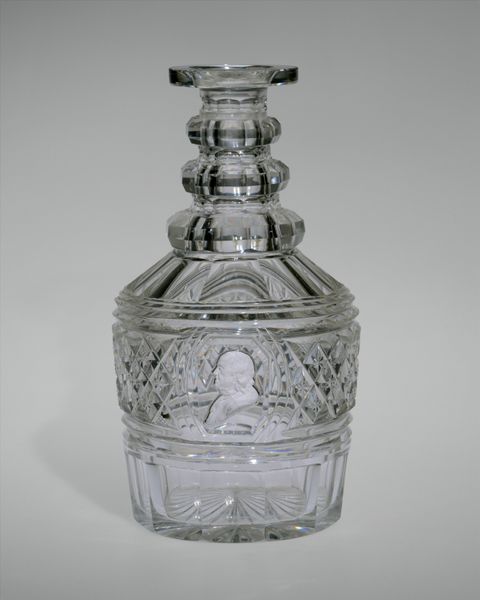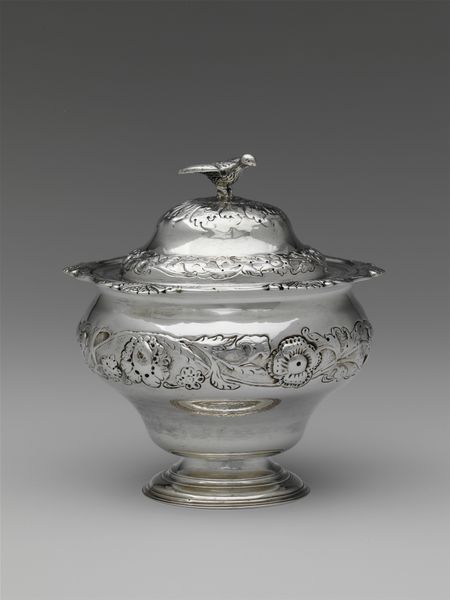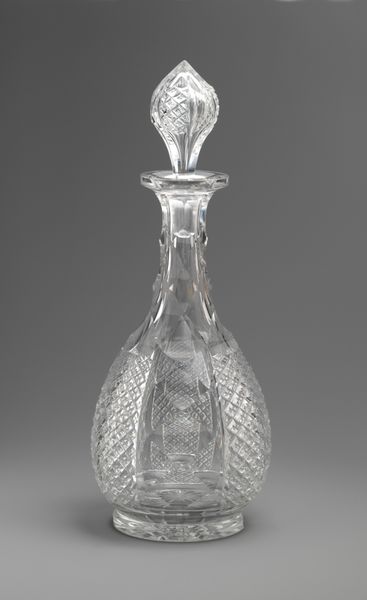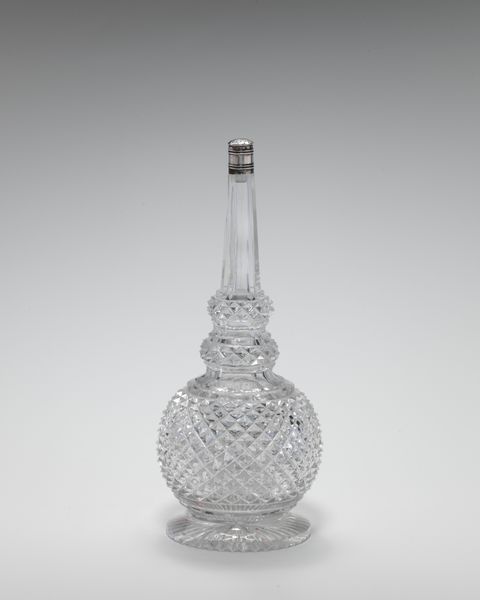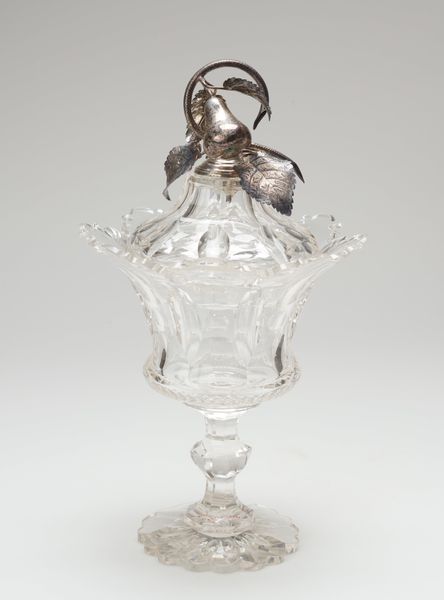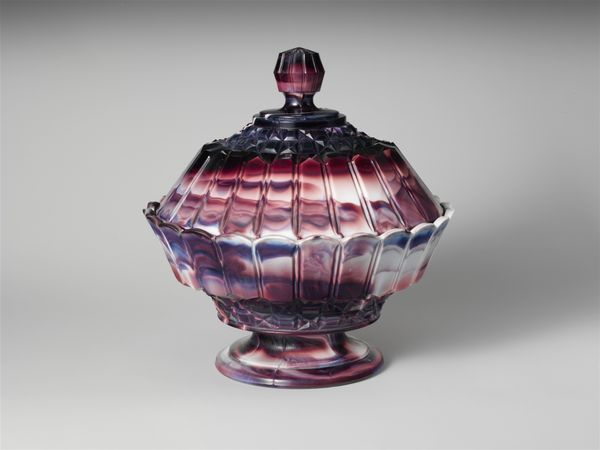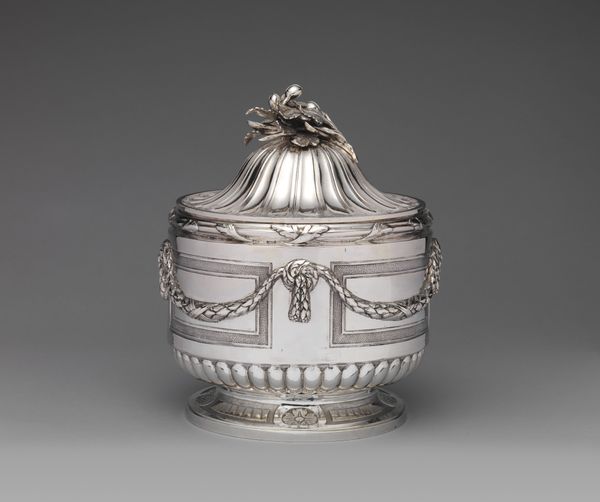
glass
#
glass
#
decorative-art
Dimensions: H. 6 1/4 in. (15.9 cm)
Copyright: Public Domain
Editor: Here we have a glass Sugar Bowl, created sometime between 1850 and 1870 by Bakewell, Pears and Company. Its intricate molded patterns give the piece a certain sparkling quality, almost jewel-like. How do you interpret the design and the cultural meaning of such an object? Curator: The "pressed glass" technique evokes both accessibility and aspiration. Mass production made elegance available, subtly reshaping social norms. How does the act of displaying or using this object signify the user's aspirations? Do you think this relates to contemporary society? Editor: That's a really insightful question. It reminds me of buying that "special occasion" item and wondering if I’m presenting myself a certain way, wouldn't you agree? Curator: Indeed! The glass itself—consider its paradoxical qualities of fragility and preservation. Does that tension amplify our understanding of Victorian values of refinement, status, and material display? Editor: I hadn’t thought of it like that, it makes a lot of sense! So the medium itself is saying something about that era’s beliefs? Curator: Absolutely. Beyond simple function, it embodies cultural memory. Its form might echo earlier, hand-crafted designs but produced by industrial means. Reflect on how technological advances are perceived and incorporated into the fabric of everyday life; does that make it any more accessible? Editor: Very true! The transition from hand-crafted to mass-produced holds significant cultural weight. Thanks, that really shifts my understanding of it! Curator: And for me too! Your observations bridge the gap between the historical object and the social dynamics still resonating today.
Comments
No comments
Be the first to comment and join the conversation on the ultimate creative platform.

